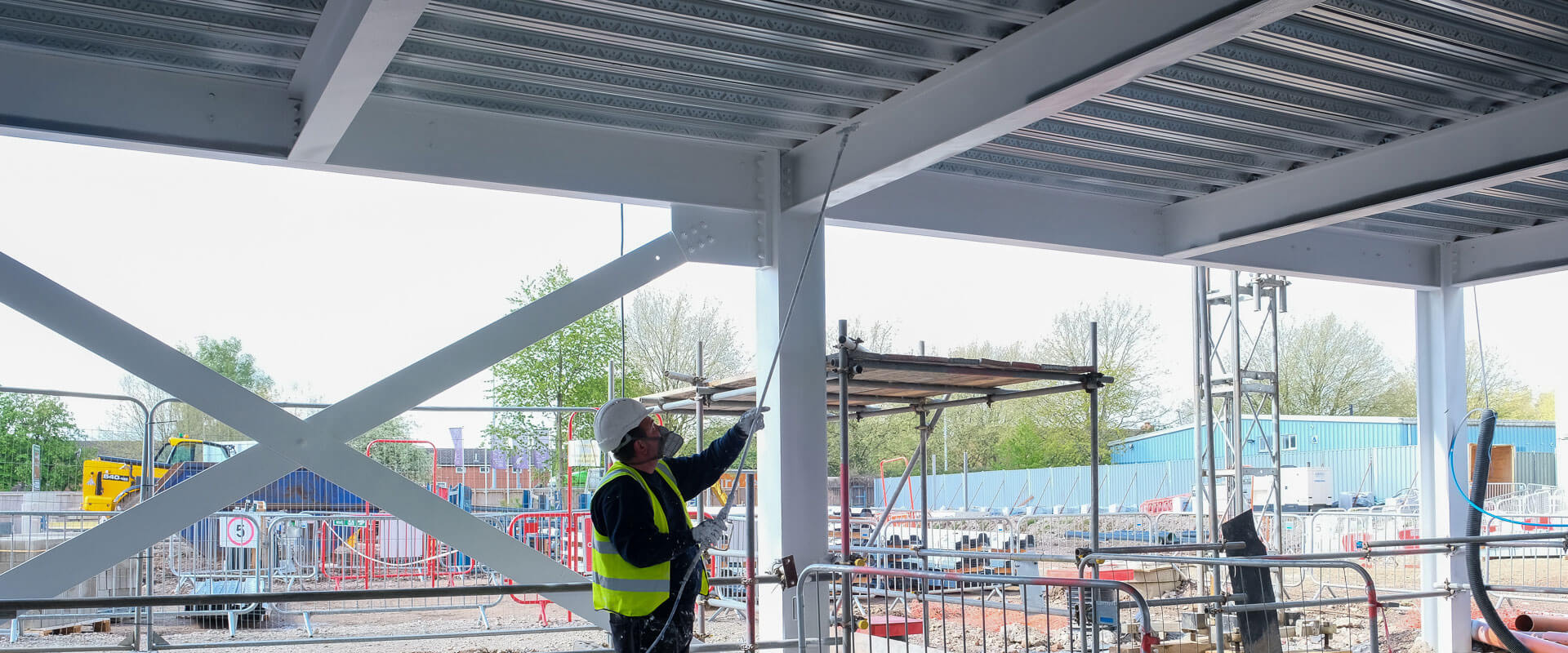
What Is The Purpose Of Passive Fire Protection?
Passive fire protection aims to complement other forms of fire safety by preserving the structure of a building to allow time for occupants to react – whilst also increasing the structure’s fire resistance.
Even with PFP, you should frequently undertake a fire risk assessment of your building to ensure there are no unnecessary hindrances in the event of a fire.
To slow down the spread of fire
PFP greatly restricts fire, smoke, and heat from spreading through to different areas of the building by containing it where it originated. This allows occupants to address the situation and evacuate the building.
To protect escape routes
By limiting the spread of the fire to one area, escape routes are left open and accessible. This allows those who are inside the building to escape safely through their nearest fire door.
Likewise, this provides extra safety for the firefighters who are addressing the fire.
To protect the structure of buildings
By taking these fire safety measures, the core structure of the building is protected which therefore extends its sustainability and lifespan.
This also makes a potential fire more manageable for the emergency services by slowing down the spread of the flames to one area, and allowing those still in the building to be evacuated.

What Does It Mean For A Building Material To Be “Fire Resistant”?
Building materials that are considered to be fire resistant have usually been treated with protective layers, barriers or coatings to reinforce their efficiency against the heat.
This means that they can withstand extreme temperatures for longer and therefore protects the structural materials.
How Does Passive Fire Protection Differ From Active Fire Protection?
The key difference between passive fire protection and active fire protection systems is that the former attempts to contain the fire, whereas the latter involves detecting and extinguishing the fire.
Active fire protection can vary between residential homes and organisational buildings. There is some overlap, but the sole goal is fire suppression. Active fire protection systems include fire extinguishers, fire hoses, emergency escape lighting, fire alarm systems, fire blankets, and sprinkler systems.
On the other hand, passive fire protection products tend to be more structurally based. Some passive fire protection methods include fire doors, fire and smoke dampers, fire-resistant glazing, and suspended ceilings.

Which Materials Are Naturally Fire Resistant?
While no building material is completely resistant to the effects of fire and heat, some have a natural resistance that can be used to reinforce other structural materials where there are susceptibilities. Here we will look at some of the most popular materials with natural heat resistance.
Concrete is an incredibly common building material that is also durable and non-combustible making it a reliable material for fire protection. It is also often used to reinforce other materials such as steel from fire.
Bricks are made through a fire kiln so they already have a high resistance to fire. Although it loses some effectiveness when combined with mortar, which is less fire-resistant, bricks are still incredibly popular for use in fire-resisting external walls.
Clay has been used to create roof tiles for centuries, and it has natural fire-resisting properties. It also has few environmental problems, so it is a good material for an eco-friendly option.
Stone has a natural resistance to fire, but it will depend on the type. Stones such as sandstone have a fair resistance to fire due to its construction, meaning that it is less likely to crack when subjected to heat.
While steel is a strong material and can put up a fight to heat, it will eventually collapse if exposed for too long. This is why steel structures are usually paired with concrete or other layers to help maintain the building’s structural integrity.
Much like steel, cast iron is resistant for a time. However, when exposed to heat and quickly cooled, cast iron can break into pieces. Therefore, cast iron is often reinforced with concrete or brickwork to enhance its resistance.
Fibreglass combines sand and glass and is often used as an insulation material. It is non-flammable and has good heat resistance, so much so that it can withstand temperatures of around 540°C before melting.
Contact JM Passive Fire Protection To Find Out More About Our Services
Need to install passive fire protection measures into your building? You can rest easy when you rely on our team of experienced and trusted experts. Visit our service page to see our range of high-quality products and services.
If you would like to find out more about our services, please get in touch with us by email at [email protected] or by phone at 0151 329 3230, or by a contact form.
FAQs
Is passive fire protection essential?
Passive fire protection is a requirement for all buildings in the UK, whether that’s residential or organisational.
PFP is an integral part of any fire safety strategy – in the event of a fire, you must ensure the safety of the building’s occupants.
Is it possible to improve passive fire protection after a building has been built?
Yes, it is possible to improve passive fire protection systems in existing buildings. This can include methods such as applying coatings to the building’s structure or reinforcing it with other materials.
As well as these, fire-resistant walls and fire doors can be installed into the building.